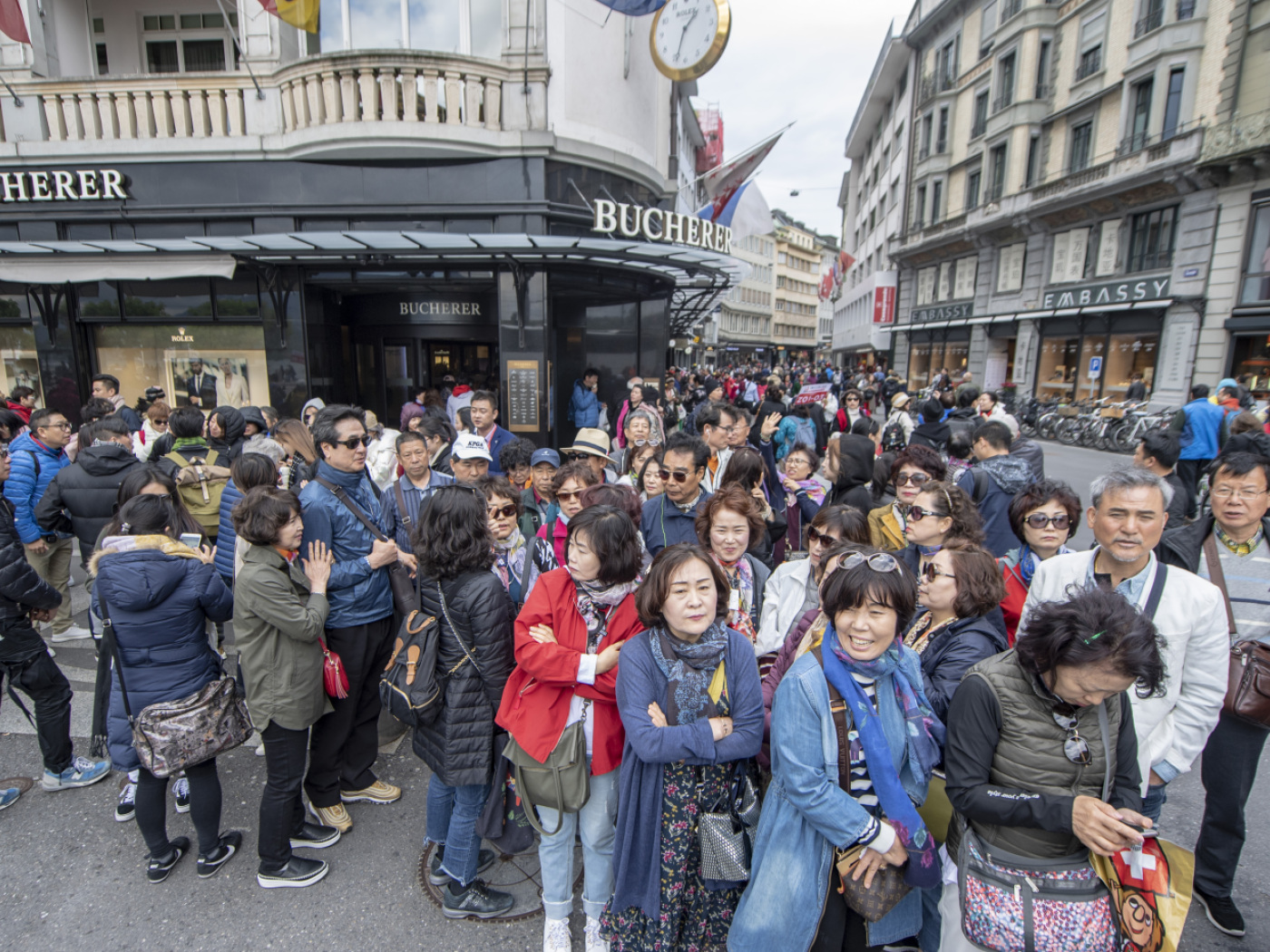
Switzerland tackles overtourism problem

Switzerland Tourism aims to improve the distribution of tourist flows, both seasonally and nationally. Where points of tension arise, the organisation believes it can resolve them through its promotional campaigns.
Do you want to read our weekly top stories? Subscribe here.
“We don’t have a problem of generalised overtourism in Switzerland,” insisted Martin Nydegger, Director of Switzerland Tourism, at a press conference in Zurich on Thursday.
Several factors explain why Switzerland is spared mass tourism, the first of which is the franc. The cost of living is a barrier to overtourism, as are the few low-cost air links and the absence of low-cost hotel complexes.
+ Swiss overtourism threatens industry’s health
The industry is coping with an average room occupancy rate of 50%, a far cry from saturation, as the aim is to improve visitor numbers. There are, however, some areas of tension.
For example, the organisation promoting Switzerland as a tourist destination estimates that cases of overtourism can be observed in “only six or seven places” in the country, which change regularly. “We keep a close watch and adapt our communication campaigns accordingly,” explains Nydegger.
According to a survey of the Swiss population, tourism is very well accepted, thanks in particular to its positive impact on the economy and infrastructure. Nevertheless, respondents cited five problems associated with the sector: inflation (10.4%), pollution and waste (9.7%), traffic problems (9.6%), scarcity of accommodation (9.4%) and damage to nature and the environment (8.4%).
Thinking outside the box
The aim is to balance visitor flows, notably by promoting slower periods, such as autumn. Influencers and other content creators are also being called upon to encourage visitors to get off the beaten track and promote lesser-known sites.
For example, a program has been set up in collaboration with Chinese journalists and influencers to promote hiking trails and electric bike tours in Davos-Klosters. In September, the organization will set up a training course in Saas-Fee for content creators, followed by a tour of Switzerland and Liechtenstein. In this way, the organization believes it “has a unique lever at its disposal”.
“Tourism players have no interest in overtourism,” remarks Laure von Wyss, coordinator of the Destination Val-de-Travers association. Her region was taken by storm during the pandemic, and had to take swift action to manage the unprecedented influx. These included finding alternatives to the car or bus to get up to Creux-du-Van.
Visitors are encouraged to walk or cycle up, with electric bikes available for hire from the Noiraigue station. “We’re making a long-term commitment to reducing the harmful effects of tourism on this emblematic site,” she explains.
Translated from French by DeepL/mga
This news story has been written and carefully fact-checked by an external editorial team. At SWI swissinfo.ch we select the most relevant news for an international audience and use automatic translation tools such as DeepL to translate it into English. Providing you with automatically translated news gives us the time to write more in-depth articles.
If you want to know more about how we work, have a look here, if you want to learn more about how we use technology, click here, and if you have feedback on this news story please write to english@swissinfo.ch.

In compliance with the JTI standards
More: SWI swissinfo.ch certified by the Journalism Trust Initiative






























You can find an overview of ongoing debates with our journalists here . Please join us!
If you want to start a conversation about a topic raised in this article or want to report factual errors, email us at english@swissinfo.ch.